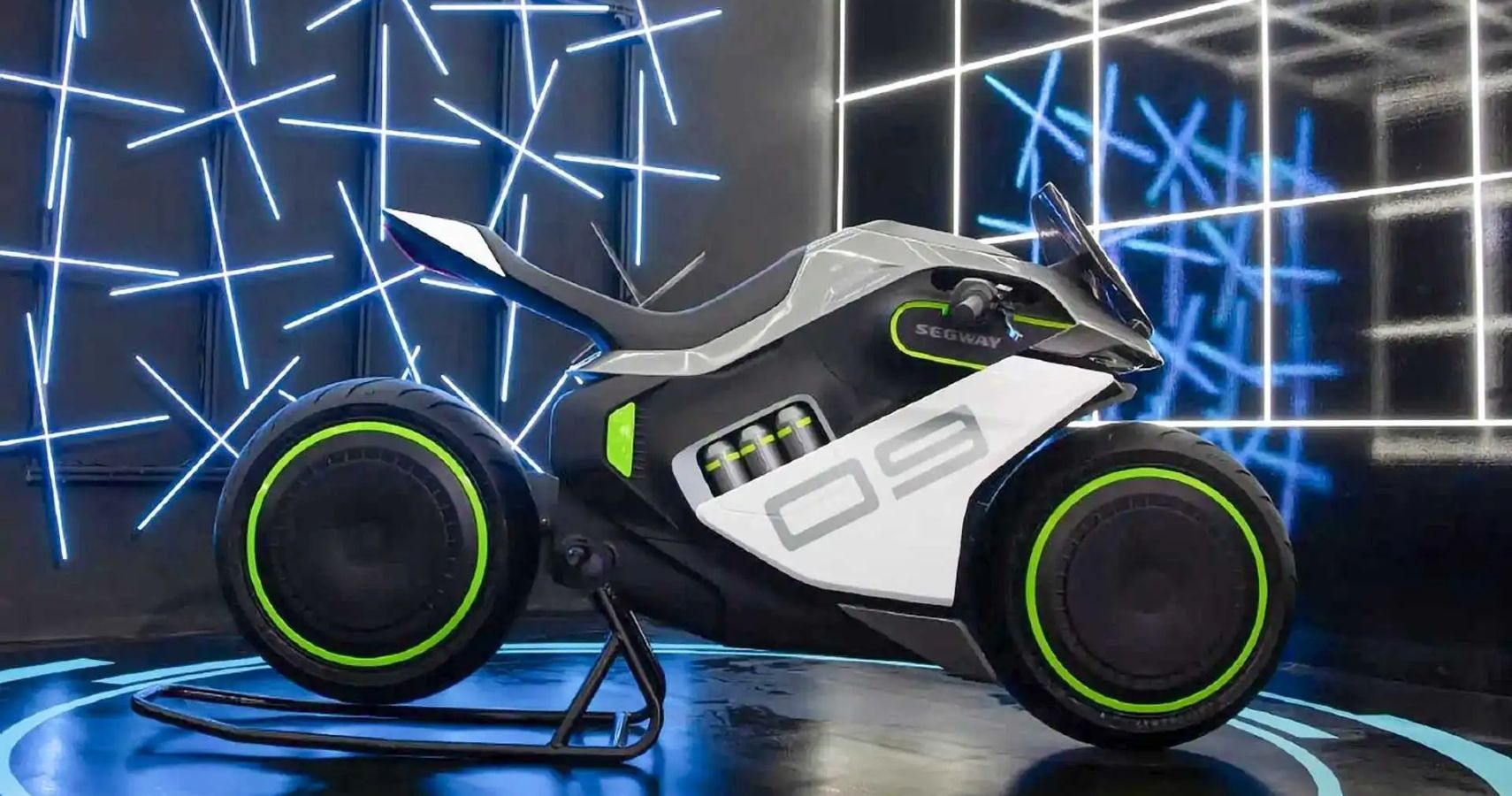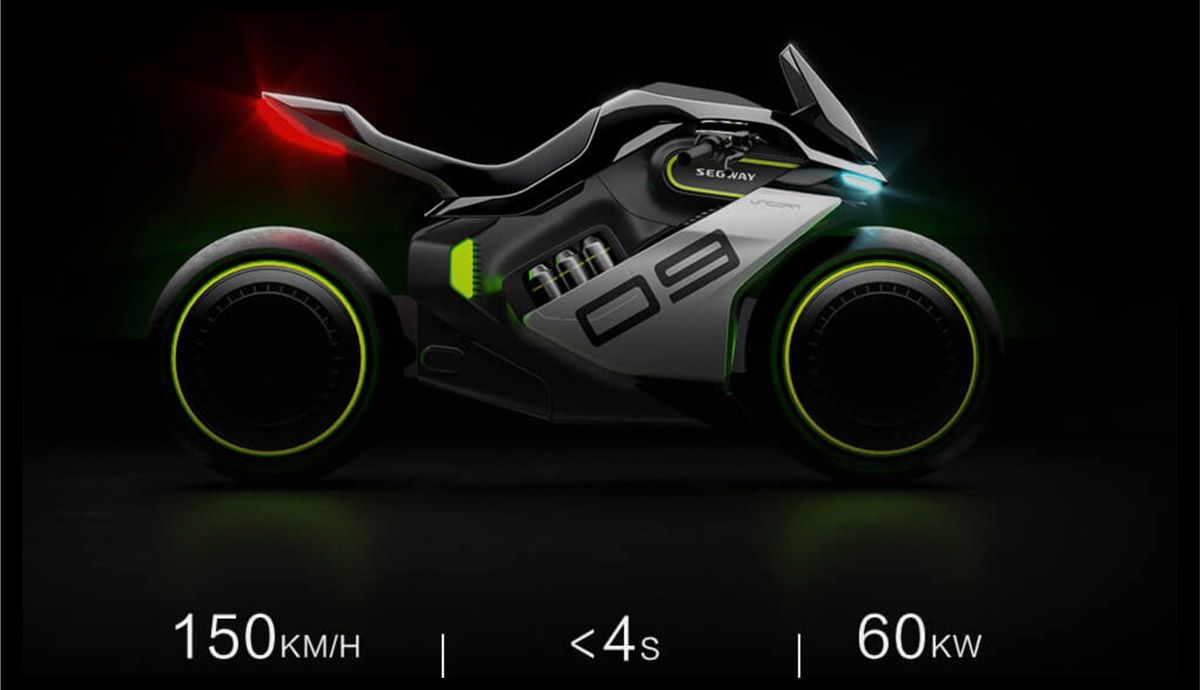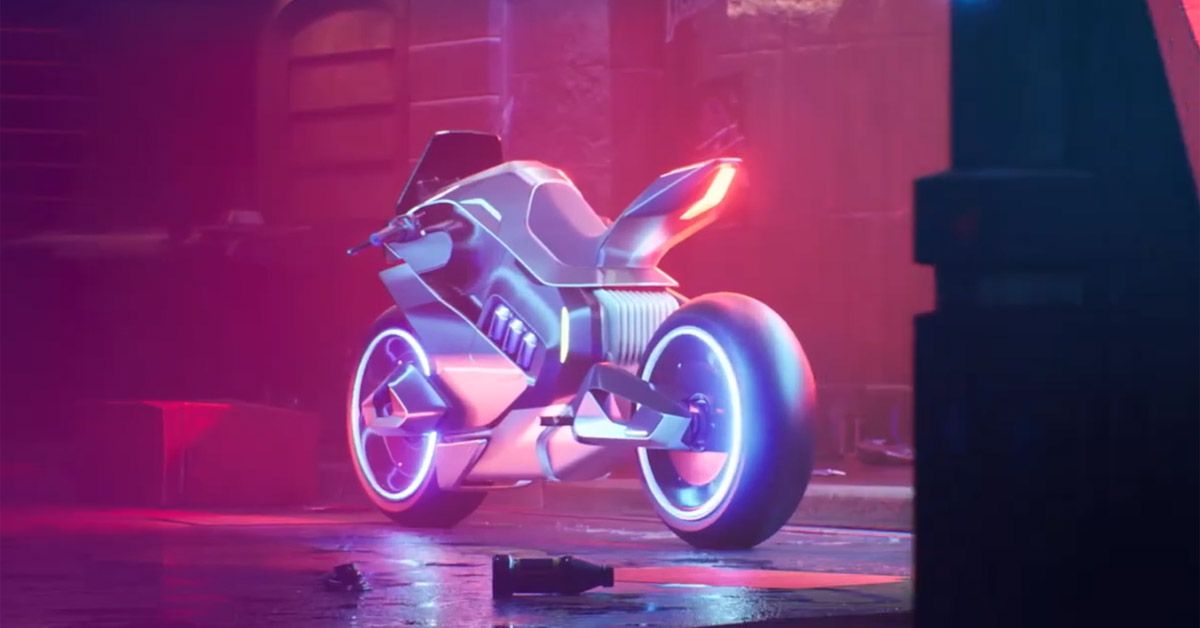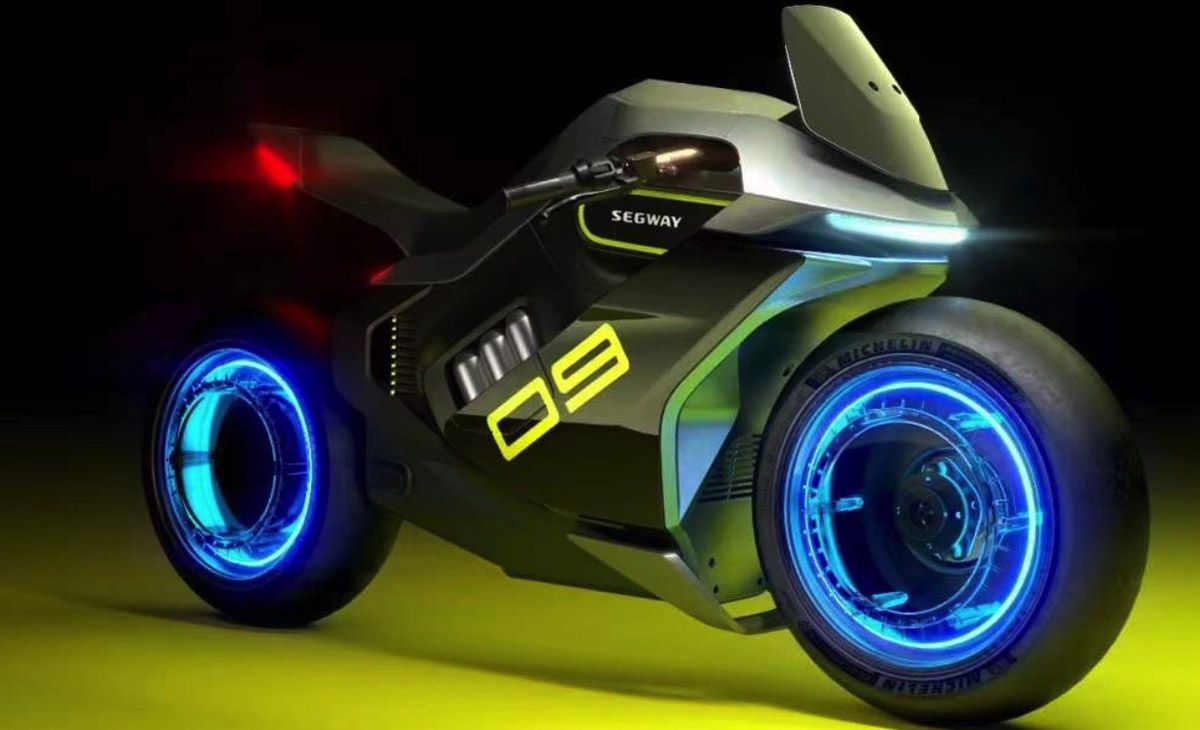Personal transporter manufacturer Segway-Ninebot has quite sensationally announced that it's developing a hydrogen-powered sports bike that looks as if it glitched its way out of Cyberpunk 2077, aside from an incredible steering design and a phenomenal price. This sports bike is powered by removable hydrogen canisters and is planned to be sold by 2023. Dubbed as the Segway Apex H2, this state-of-the-art futuristic motorcycle is the updated concept first introduced in 2019. In 2015, Segway was taken over by Ninebot, one of its Chinese rivals, who are now behind this exciting project. Not only does the latest bike present futuristic looks straight up from a sci-fi movie, but the Apex H2 will also be an innovative hydrogen hybrid.
The H2 is the latest Ninebot vision for Segway's future transportation solutions, backing their initial 2019 concept of the Apex, now fitted with a hybrid electric-hydrogen powertrain.
A Cyberpunk-Inspired Design
What makes this bike look so outrageously next-gen is its startling lack of suspension forks. Thanks to a single-sided front swingarm and hidden mono-shock arrangement, and a matching single-sided swingarm at the back, the front wheel looks like it's floating in the air.
From the radical handlebar position to the exposed carbon dioxide canister storage to the futuristic bodywork, Segway has preserved the concept's styling to a tee, and the dual single-sided swingarm layout has returned. However, in contrast to the idea, the road-oriented tires wrap the dual disc wheels, substituting for the slicks found in the Apex H2 renders. The cutting edge, sporty, and modern design includes not one but two swinging arms or pivots on one side, which signifies that the Apex H2 wheels appear to float. The hydrogen-powered bike from Segway, a brand that belongs to the tech giant Xiaomi, also has some special props such as a 7-inch front multimedia screen and the horizontal headlights already amalgamated into the vehicle.
A debonair lightbar that appears to be the headlamp highlights the front end and adds to the poignant futuristic look. Behind the headlamp is the handlebar incorporated delightfully into this bulky tank. The neon lights all over the body, single swingarm, and hubless wheels complete the sleek overall design.
The Futuristic Hydrogen Boosted Motorcycles
The ultra-futuristic-looking motorcycle flaunts a hydrogen-electric hybrid powertrain that uses up gaseous hydrogen stored in tanks. A fuel cell converts hydrogen into electrical energy. A buffer battery uses this electricity to power an electric motor linked to the rear wheel, while the exhaust port only releases water vapor. While this minor triviality separates the prototype from the concept, Segway is adhering to its plan to release the H2 production model before 2023 ends.
The automaker claims the hybrid motorcycle generates an output of 80 horsepower and 93 MPH of top speed. Segway had previously also announced that the hydrogen-powered bike would reach 62 MPH in four seconds. This is irrefutably slower than most motorcycles, but the bike counterbalances for it with its environmental credentials as it only spews out water vapor from its exhaust pipe.
The Scope For Hydro Power in Motorcycle Biz
Currently, batteries are predominantly prevalent in the passenger car market, but they're insufficient for other categories of vehicles. For instance, shipping and long-haul electric aviation vehicles need an energy storage setup to carry more electrons. For such large machinery, hydrogen could be optimal.
There may be a case for hydrogen on motorcycles as electric bikes are already outstanding commuting options. Still, most riders prefer something they can fill up quickly at a fuel station for pleasure and sports riding. Battery-powered bikes, when ridden hard, tend to run out of juice long before their gasoline siblings start blinking their reserve lights, and it's not a viable option to wait for an hour for the bike to charge. Hydrogen is more advantageous here as it offers much higher energy density than lithium batteries, and filling up the fuel tank is faster, provided there's a hydrogen station nearby. An H2 motorcycle would offer more range on a tank than most battery bikes on a charge, and it even fills up quickly to hit the road again.
Despite the premium design, advanced technology, and development costs, Segway plans to offer the H2 at $10,700. While that price tag would undermine many flagship electric vehicles, the lack of hydrogen infrastructure in the current scenario would remain a hurdle for this project.
It's promising to see Segway make strides with its Apex H2 electric-hydrogen hybrid concept, but there are lots of unanswered questions surrounding it. However, hydrogen could be a fitting substitute and prove practical and helpful in decarbonizing the touring and sports motorcycle markets.




